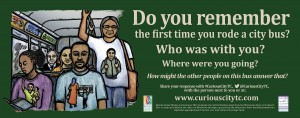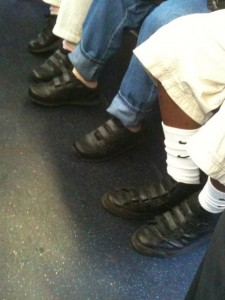Back in the day, NYC subway ads were used to select beauty queens. Seriously.
 Miss Subways 1940
Miss Subways 1940
The Miss Subways pageant was a monthly contest run by the New York Subways Advertising Agency between 1941 and 1976. To compete for this coveted title, entrants had to be female, between the ages of 14 (!) and 30, New York City residents, and–most importantly–subway riders. Though the finalists were selected by a modeling agency, the winners were chosen by the contestants’ fellow riders–through a call-in voting system. The photo and bio of each month’s winner were displayed in the ad space of every car on three major lines.
Feminist issues aside, the fact that these beautiful, instant celebrities–recognized by more New Yorkers than the most successful of Broadway actresses– were of, by, and for the community of everyday riders* made the subway seem glamorous and full of potential. (The first Miss Subways was Mona Freeman, who went on star in several popular teen films. ) The ads for the contest encouraged riders to think this way: Look around this car! Next month’s selection may be riding with you! [Indeed.]
The contest was discontinued in 1977 and briefly revived in 2004. Caroline Sanchez-Bernat was crowned Ms. Subways to help commemorate the New York Subway’s 100th anniversary. In the modern version of the contest, the application included short essay questions. Here’s part of Ms. Sanchez-Bernat’s response to, “What does the subway mean to you?”
…I can rely on it to get me safely to work in the morning and home at night. It’s also my favorite place to people watch.… The more I ride the subway the more I learn about what it is to be a New Yorker…
I couldn’t have said it better.
*The subway being one of the most democratic forms of transportation–and subway riders being a diverse and fair-minded lot, barriers that existed in mainstream pageants were more easily transgressed in this one. The first black Miss Subways won the title in 1946, 35 years before the first black Miss America. In 1949, the first Asian woman became Miss Subways, and several other women of color won the title over the years.



 Miss Subways 1940
Miss Subways 1940
